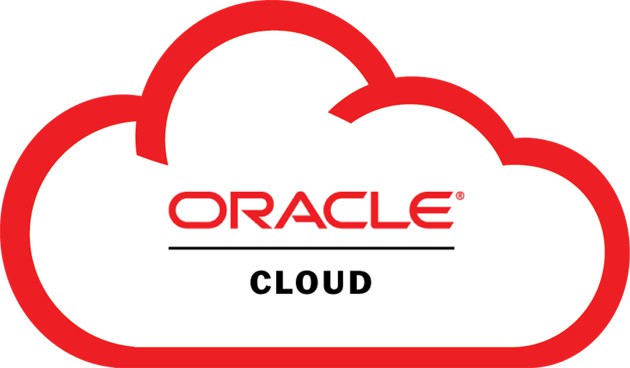Oracle Cloud Free Tier offers users a chance to explore cloud services without cost. This program provides access to a range of Oracle Cloud Infrastructure (OCI) resources. Users can access over 20 Always Free services and 30-day free trials with $300 in free credits.
The Free Tier includes popular services like Autonomous Database, Compute VMs, and Object Storage. These resources allow developers, students, and businesses to test and build applications in the cloud. Oracle designed this offering to compete with other major cloud providers.
Users can sign up for Oracle Cloud Free Tier with just an email address and credit card for verification. The service is available in most regions where OCI operates. Oracle maintains the Free Tier resources indefinitely, allowing users to learn and experiment at their own pace.
Oracle Cloud Free Tier: Your Gateway to the Cloud
Oracle Cloud offers a generous Free Tier program, allowing you to explore and experiment with its cloud services without cost. It’s a great way to get hands-on experience with Oracle Cloud Infrastructure (OCI) and build applications in the cloud.
What’s Included in the Free Tier?
Oracle Cloud Free Tier provides two main components:
- Always Free Services: These services are available for an unlimited time and include:
- Compute: 2 Ampere A1 cores and 24 GB of memory
- Storage: 20 GB of block storage, 10 GB of object storage, and 10 GB of archive storage
- Networking: 10 Gbps bandwidth
- Databases: 2 Autonomous Databases (1 for transaction processing and 1 for data warehousing)
- Other services: Load balancers, monitoring, notifications, and more
- Free Trial: You get \$300 in credits for 30 days to try any eligible OCI service. This allows you to explore a wider range of services beyond the Always Free options.
Who Can Benefit from the Free Tier?
- Students: Learn cloud computing and build projects without incurring costs.
- Developers: Experiment with new technologies and develop applications in the cloud.
- Startups: Build and test minimum viable products (MVPs) without upfront investment.
- Anyone curious about the cloud: Explore Oracle Cloud and see if it’s the right fit for your needs.
How to Get Started
- Sign up for an Oracle Cloud account: Visit the Oracle Cloud website and create a free account.
- Choose a data region: Select a data region that’s closest to you for optimal performance.
- Start using free services: Access the Always Free services and start exploring OCI.
- Use free trial credits: Use your \$300 credits to try other OCI services.
Table of Always Free Services
| Service Category | Service | Limits |
|---|---|---|
| Compute | Ampere A1 Compute | 2 cores, 24 GB memory |
| Storage | Block Storage | 20 GB |
| Object Storage | 10 GB | |
| Archive Storage | 10 GB | |
| Networking | Bandwidth | 10 Gbps |
| Databases | Autonomous Database | 2 instances |
Beyond the Free Tier
Once you’ve explored the Free Tier, you can upgrade to a paid account to access more resources and services. Oracle Cloud offers a pay-as-you-go model, allowing you to scale your resources as needed. You can also choose from various pricing options and discounts to optimize your cloud costs.
Key Takeaways
- Oracle Cloud Free Tier provides free access to over 20 cloud services
- Users can build and test applications without incurring costs
- The program includes both time-limited trials and Always Free resources
Getting Started with Oracle Cloud Free Tier
Oracle Cloud Free Tier offers users a no-cost entry point to explore cloud services. It provides access to essential resources and a promotional trial period with credit for additional services.
Creating an Oracle Cloud Account
To start using Oracle Cloud Free Tier, users need to create an account. The signup process is straightforward and requires basic personal information. Users must provide a valid email address and phone number for identity verification.
During registration, Oracle asks for payment details. A credit card is necessary, but it won’t be charged for Free Tier services. This step helps prevent fraud and ensures genuine users access the platform.
After submitting the required information, Oracle verifies the account. This typically takes a few minutes. Once approved, users can log in and start exploring the Free Tier offerings.
Understanding Always Free Resources
Oracle Cloud Free Tier includes Always Free services that never expire. These resources allow users to build and test applications without cost concerns. Key Always Free offerings include:
- Autonomous Database: Two databases with powerful features for data management.
- Compute Instances: Two virtual machines for running applications and workloads.
- Object Storage: Up to 10 GB for storing files and data.
Users can access these services indefinitely, making them ideal for learning and small-scale projects. The Free Tier also offers a 30-day trial with $300 credit for exploring additional paid services.
It’s important to monitor resource usage to avoid exceeding Free Tier limits. Oracle provides tools to track consumption and set up alerts for better resource management.
Maximizing the Value of Oracle Cloud Free Tier
Oracle Cloud Free Tier offers significant benefits for users looking to explore cloud services. Effective use of free credits and optimization of infrastructure can enhance the overall experience.
Leveraging Free Credits and Paid Services
The Oracle Cloud Free Tier provides a Free Trial with US$300 of credit. These credits are valid for 30 days and can be used on eligible Oracle Cloud Infrastructure services.
Users should plan their usage carefully to maximize the value of these credits. Priority should be given to testing high-value services that may not be available in the Always Free tier.
It’s important to monitor credit usage through the Oracle Cloud Console. This helps prevent unexpected charges when the trial period ends.
After exhausting free credits, users can switch to a Pay As You Go model. This allows for continued use of services beyond the Free Trial period.
Optimizing Infrastructure with Oracle Cloud Tools
Oracle Cloud offers various tools to help users optimize their infrastructure. The Cloud Cost Estimator is a valuable resource for planning and budgeting.
Users should take advantage of Always Free resources in their home region. These include compute instances, block storage, and object storage.
Terraform can be used for infrastructure-as-code deployment. This allows for efficient management and scaling of resources.
Security features should be fully utilized to protect cloud assets. Oracle provides built-in security tools at no additional cost.
APIs enable automation of common tasks. This can lead to improved efficiency and reduced management overhead.







